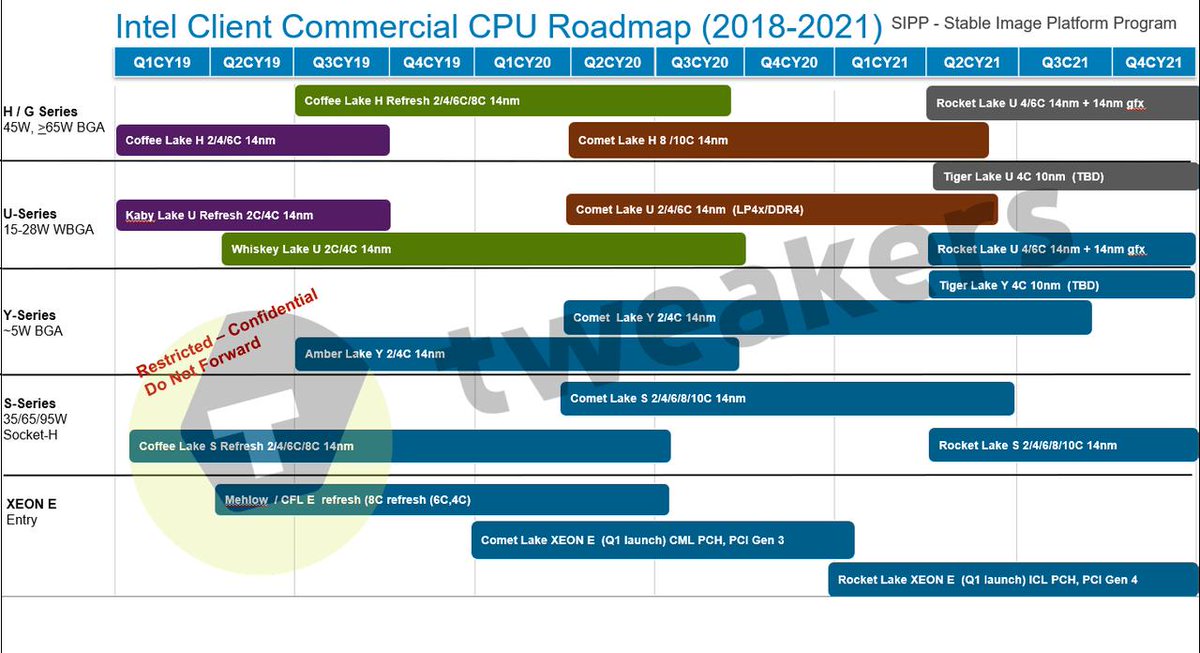Soldato
10 core intel 14nm 5Ghz is going to be a THOUSAND degrees lol.
Please remember that any mention of competitors, hinting at competitors or offering to provide details of competitors will result in an account suspension. The full rules can be found under the 'Terms and Rules' link in the bottom right corner of your screen. Just don't mention competitors in any way, shape or form and you'll be OK.
10 core intel 14nm 5Ghz is going to be a THOUSAND degrees lol.
10 core intel 14nm 5Ghz is going to be a THOUSAND degrees lol.

10 core intel 14nm 5Ghz is going to be a THOUSAND degrees lol.

It's been common knowledge for a while that Intel's 10nm node won't perform as well as their 14nm node in its first iteration, at least. This basically means it won't clock as high, since Intel has seemingly abandoned IPC increases (presumably pending a brand new architecture at some point). This is part of the reason that I expect no surprises from Intel any time soon: even if 10nm happens in 2019, it won't be used for high end desktop parts. 10 core 14nm+++ chips are far more likely.The biggest thing a 10 core chip on 14nm would signal imo is that they aren't confident of getting desktop 10nm higher core/performance parts in 2019. It's already leaning more towards thinking end of 2019 will bring probably quad core mobile parts and maybe if Intel wants to still have dual cores, a dual core part.
It's worth noting though that a 10 core cpu with igpu would be even worse again for Intel with capacity issues in terms of further reducing their capacity, but if they finally brought back pure cpus to mainstream then 10 core cpu would be smaller than a 8 core + igpu die. It would even be better financially if they managed to reduce die size but stuck with similar pricing as to the 9900k. Probably 99% of people who buy the two two SKUs on desktop don't use the igpu so a 10 core cpu only chip would make a lot of sense for them but obviously for salvage reasons you'd probably end up with at a guess, 10, 8 and 6 core chips without iGPU
Still though there is the issue on time frame, based on when the 9900k came out, I can't see them launching a 10 core before well, end of H2 2019 at the earliest really, maybe even Q3 and for me that puts 10nm replacements well into Q2 or Q3 2020.
Ugh...so does that mean no 10nm chips until 2021 and no 10nm mainstream desktop parts until at least 2022??Intel roadmap until 2021 leaked:
https://twitter.com/witeken/status/1121052220072583174

10C desktop consumer CPUs until early 2021.
^ agree with this, as a VMware consultant, always core count > clock speed.
Unless you are the internet where games "matter" and so CS >>>>> CC.
14nm 6th Time Over: Intel Readies 10-core "Comet Lake" Die to Preempt "Zen 2" AM4
Look like 14nm 10 core CPU in H1 2019 and 10nm in H2 or end of 2019, think I am glad I stick with 8700K.
And countering an existing 32 core Threadripper with a 28 core.I hate to tell you this Intel, but, you're preempting at 16 core CPU with a 10 core.

Don't get me wrong, with the NUMA issues on the 2990WX and Windows scheduler being rubbish, the 28 core Skylake X might actually trump Threadripper in performance, but a 9900K with another 2 furnaces lashed onto it is supposed to counter 12 and 16 core Ryzen 3000? Did Intel not watch CES?
Its fine, AMD have got this. Both ways

Don't get me wrong, with the NUMA issues on the 2990WX and Windows scheduler being rubbish, the 28 core Skylake X might actually trump Threadripper in performance, but a 9900K with another 2 furnaces lashed onto it is supposed to counter 12 and 16 core Ryzen 3000? Did Intel not watch CES?
AMD have mastered snatching defeat from the jaws of victory, so I'd leave the Champagne on ice for now
Intel roadmap until 2021 leaked:
https://twitter.com/witeken/status/1121052220072583174

10C desktop consumer CPUs until early 2021.

